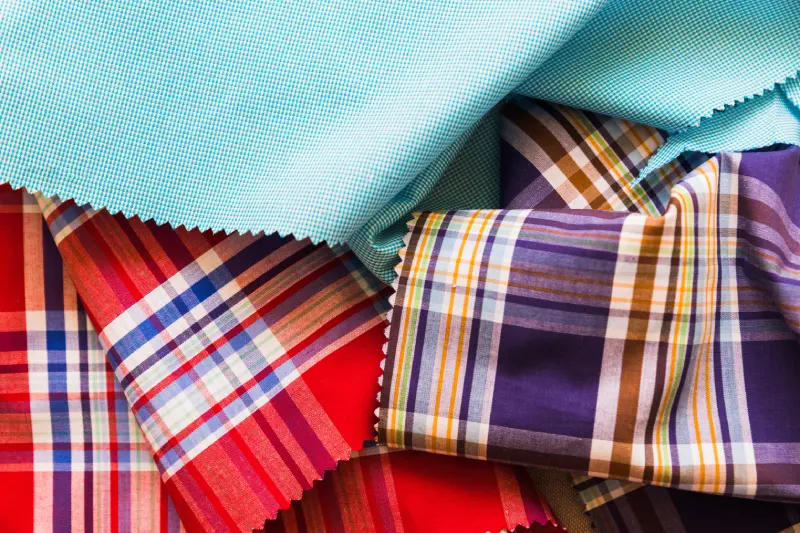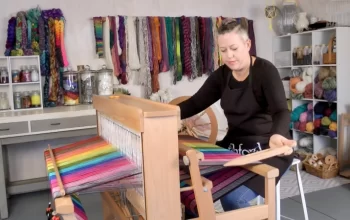In the world of fabrics, two names stand out as champions: cotton and polyester. Both have been at the forefront of fashion, comfort, and utility for decades, but what really sets them apart, and what brings them together? Whether you’re a fashion enthusiast, a conscious consumer, or simply someone looking to understand the fabrics that clothe you daily, diving into the nuances of cotton and polyester is a journey worth taking. Let’s unravel the threads of these iconic fabrics to discover their similarities, differences, and the timeless styles they have inspired over the years.
Cotton Vs Polyester Fabric, 10 Similarities

- Versatility in Use
Both cotton and polyester are incredibly versatile fabrics, as both offer a wide array of products and fashions. Whether it’s clothing, home textiles, or industrial applications, these fabrics adapt to your needs. Their ability to be woven into various textures and weights empowers you to find the perfect fabric for everything from t-shirts and jeans to curtains and upholstery.
- Blending Capabilities
Cotton and polyester are often blended to combine the best of both worlds. This blend enhances the durability and comfort of the fabric, making it ideal for everyday wear. The combination results in a soft and strong fabric, perfect for enduring repeated washings and wear.
- Ease of Dyeing
Both cotton and polyester take dye well, allowing for vibrant and long-lasting colours. This quality makes them favourites in the fashion industry, where colour variety and retention are crucial. Advanced dyeing techniques have enabled precise colour matching and gradients, expanding the creative possibilities.
- Printability
Cotton and polyester fabrics are excellent for printing. Whether it’s screen printing, digital printing, or sublimation, these fabrics hold prints well, making them ideal for creating customized apparel and home decor. The sharpness and durability of prints on these fabrics ensure that designs remain vibrant and clear over time.
- Affordability
Both fabrics are generally affordable, ensuring that they are accessible to a wide range of consumers. Regardless of your budget, cotton and polyester offer quality options that won’t break the bank.
- Moisture Management
Cotton and polyester have good moisture-wicking properties, although they manage them differently. Cotton absorbs moisture, keeping it away from the skin, while polyester wicks moisture to the surface, where it can evaporate. This makes both fabrics suitable for activewear and everyday clothing.
- Breathability
While cotton is renowned for its natural breathability, polyester has also been engineered to allow airflow. This makes both fabrics suitable for warm-weather clothing and bedding, ensuring comfort by preventing overheating.
- Hypoallergenic Options
Both cotton and polyester can be hypoallergenic, making them suitable for people with sensitive skin. High-quality cotton, in particular, is often recommended for its gentle touch, while advancements in polyester manufacturing have reduced the presence of allergens.
- Wide Availability
Both fabrics are widely available globally, making them staples in the textile industry. Their popularity ensures that they can be easily sourced for a variety of uses, from fashion to home decor and beyond.
- Eco-Friendly Innovations
Recent advancements have seen both cotton and polyester fabrics produced with a focus on sustainability. The rise of organic cotton and recycled polyester is a promising step towards a more eco-friendly textile industry that caters to the needs of the environmentally-conscious consumer.
Cotton Vs Polyester Fabric, 10 Differences

- Source and Composition
Polyester is a synthetic fabric from petrochemicals, whereas cotton is a natural fibre obtained from the cotton plant. This fundamental difference influences numerous characteristics, such as sensation, durability, and environmental impact.
- Feel and Comfort
Cotton is known for its soft, breathable feel, making it a favourite for everyday wear and bedding. Polyester, while also comfortable, tends to have a smoother, less breathable feel, often requiring blending with other fibres to enhance comfort.
- Durability
In general, polyester is more robust than cotton. Fabric is perfect for activewear and is often washed because the fabric doesn’t stretch, shrink, or wrinkle. Cotton is durable, but it ages quickly, wrinkles, and shrinks more easily.
- Maintenance and Care
Cotton requires more maintenance than polyester. It holds its shape nicely, dries fast, and is wrinkle-resistant. Conversely, cotton needs additional upkeep, such as gentle washing to avoid shrinking and ironing to get rid of creases.
- Environmental Impact
Although cotton is renewable and biodegradable, it is grown using water and pesticides. Polyester is a plastic-based fabric that can be recycled but is not biodegradable. However, because virgin polyester manufacture relies heavily on fossil fuels, it has a significant environmental impact.
- Moisture Absorption
Cotton absorbs moisture well, making it feel cooler and more comfortable in hot weather. However, polyester is hydrophobic and does not absorb moisture, making it feel less comfortable in high humidity but ideal for quick-drying applications.
- Heat Resistance
Cotton is more heat-resistant and can be ironed at high temperatures. Polyester is sensitive to heat and can melt or deform if exposed to high temperatures, requiring careful laundering and ironing.
- Static Electricity
Polyester is prone to static electricity buildup, especially in dry conditions. As a natural fibre, cotton does not build up static electricity as easily, making it more comfortable to wear in varying climates.
- Biodegradability
Since cotton is a biodegradable substance, it can decompose naturally over time without endangering the ecosystem. However, polyester is not biodegradable and, if improperly recycled, can lead to long-term contamination.
- Colour Retention
Polyester holds colour better than cotton, which can fade over time with repeated washing. This makes polyester ideal for items that need to retain their vibrant colours over long periods, such as sports uniforms and outdoor gear.
5 Prominent Cotton Styles Since Decades

- Denim
Denim is one of the most enduring cotton fabrics, synonymous with jeans and jackets. Its rugged texture and durability make it a timeless favourite, evolving from workwear to a fashion staple. Denim’s versatility allows for various washes and finishes, catering to a wide range of styles.
- Chambray
Chambray is a lightweight cotton fabric with a plain weave. It is more pliable and supple than denim. Its effortless yet elegant style makes it a hit for summer clothing like dresses, shirts, and outfits. The breezy texture of chambray makes it ideal for warm weather, and its timeless look guarantees that it never goes out of style.
- Flannel
People have loved the cosy, woven cloth known as flannel in the winter months for many years. It is brushed to add additional softness and warmth to the cotton construction. In colder regions, flannel shirts and pyjamas are essentials because of their cosiness and comfort.
- Seersucker
Seersucker is a lightweight, breathable cotton fabric with puckered edges, perfect for summer attire. Its distinct texture creates air pockets, keeping the user cool. The breezy elegance and summertime comfort of seersucker suits and dresses have made them famous.
- Muslin
Muslin is a cotton cloth with a plain weave that has been used for millennia. Because of its breathability and lightweight, it’s frequently used to create dresses and curtains and as a foundation fabric for pattern making. Muslin is a standard in many applications due to its ease of use and functionality.
5 Prominent Polyester Styles Since Decades

- Microfiber
Microfiber is a form of polyester known for its fineness and softness. Due to its absorbency and quick-drying properties, it is widely used in cleaning cloths, athletic wear, and bedding. Microfiber’s ability to trap dirt and moisture makes it indispensable in various household and industrial applications.
- Polar Fleece
Polar fleece is a synthetic wool-like fabric made from polyester. It’s lightweight, warm, and moisture-resistant, making it ideal for outdoor wear and blankets. Polar fleece’s insulating properties and soft texture have made it a favourite for winter clothing and activewear.
- Polyester Satin
Polyester satin is a shiny, smooth fabric that mimics the appearance of silk. It’s commonly used in evening wear, lingerie, and decorative items. Polyester satin’s durability and affordability make it a popular choice for elegant, budget-friendly fashion.
- Spandex Blends
Polyester is often blended with spandex to create stretchy, form-fitting fabrics. These blends are popular in activewear, swimwear, and dance costumes. The combination of polyester’s durability and spandex’s elasticity results in fabrics that move with the body while retaining their shape.
- Polyester Mesh
Polyester mesh is a breathable, open-weave fabric used in sports jerseys, backpacks, and outdoor gear. Its durability and airflow make it perfect for athletic and functional applications. Polyester mesh’s versatility and performance have increased demand across various industries.
Conclusion
In the ever-evolving world of textiles, cotton and polyester stand out for their unique qualities and enduring popularity. While cotton offers natural comfort and breathability, polyester provides durability and low-maintenance care. Both fabrics have their place in fashion and everyday use, often blending to create the perfect balance of comfort and performance. Whether the practical advantages of polyester or the classic elegance of cotton appeal to you more, knowing the features and distinctions between the two materials enables you to make decisions that complement your tastes and way of life. Take advantage of the finest of both worlds and allow these textiles to keep inspiring your decor and clothing.




